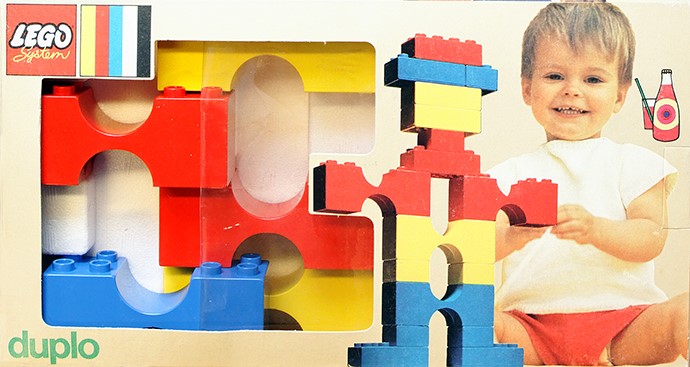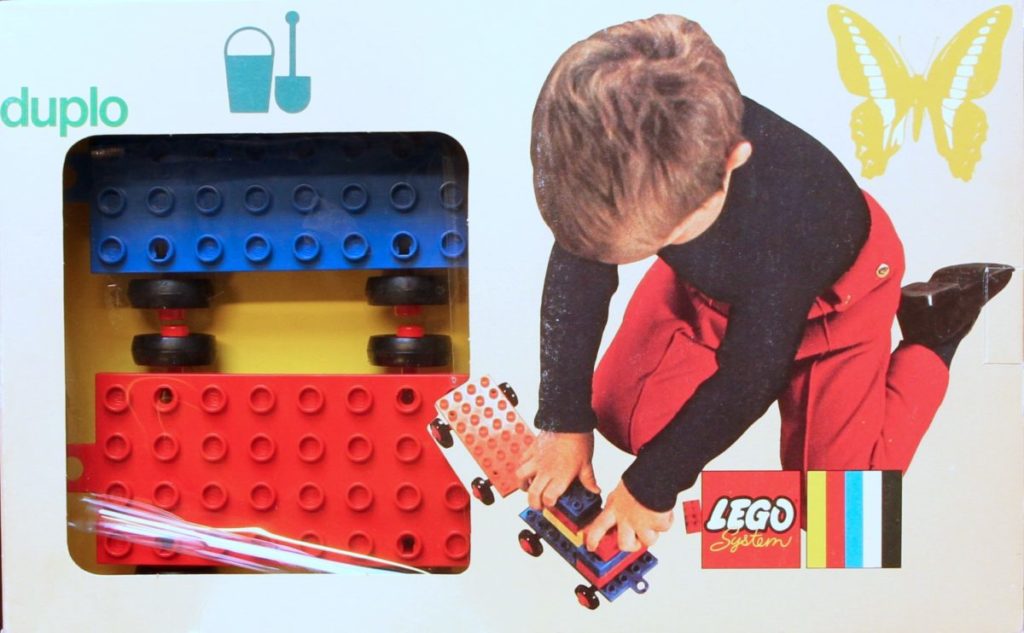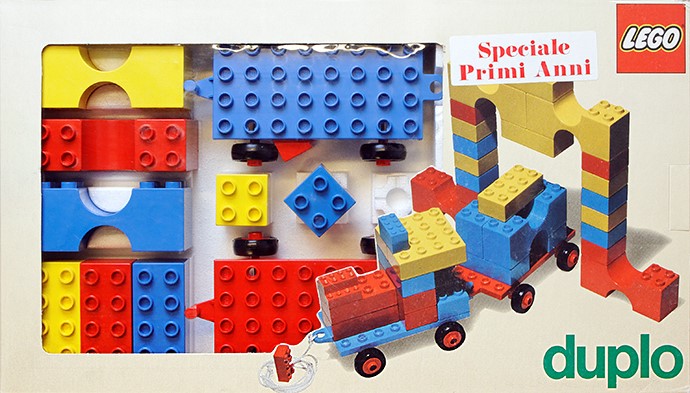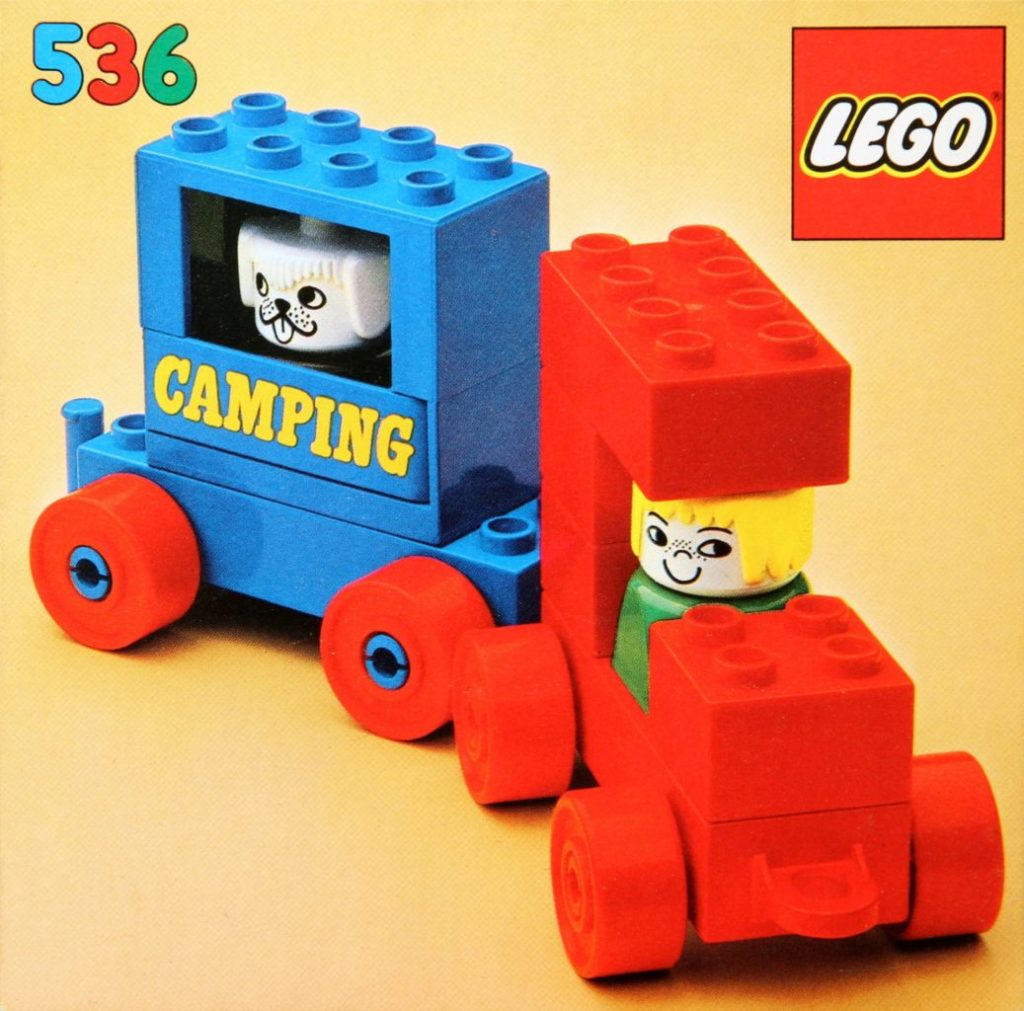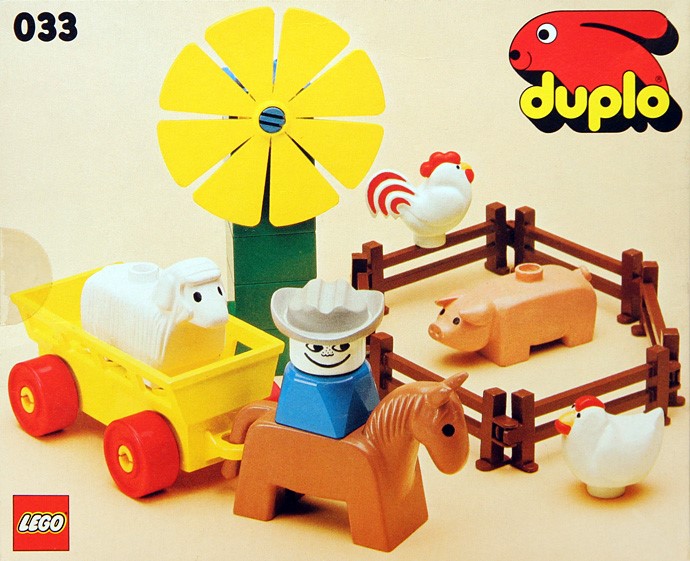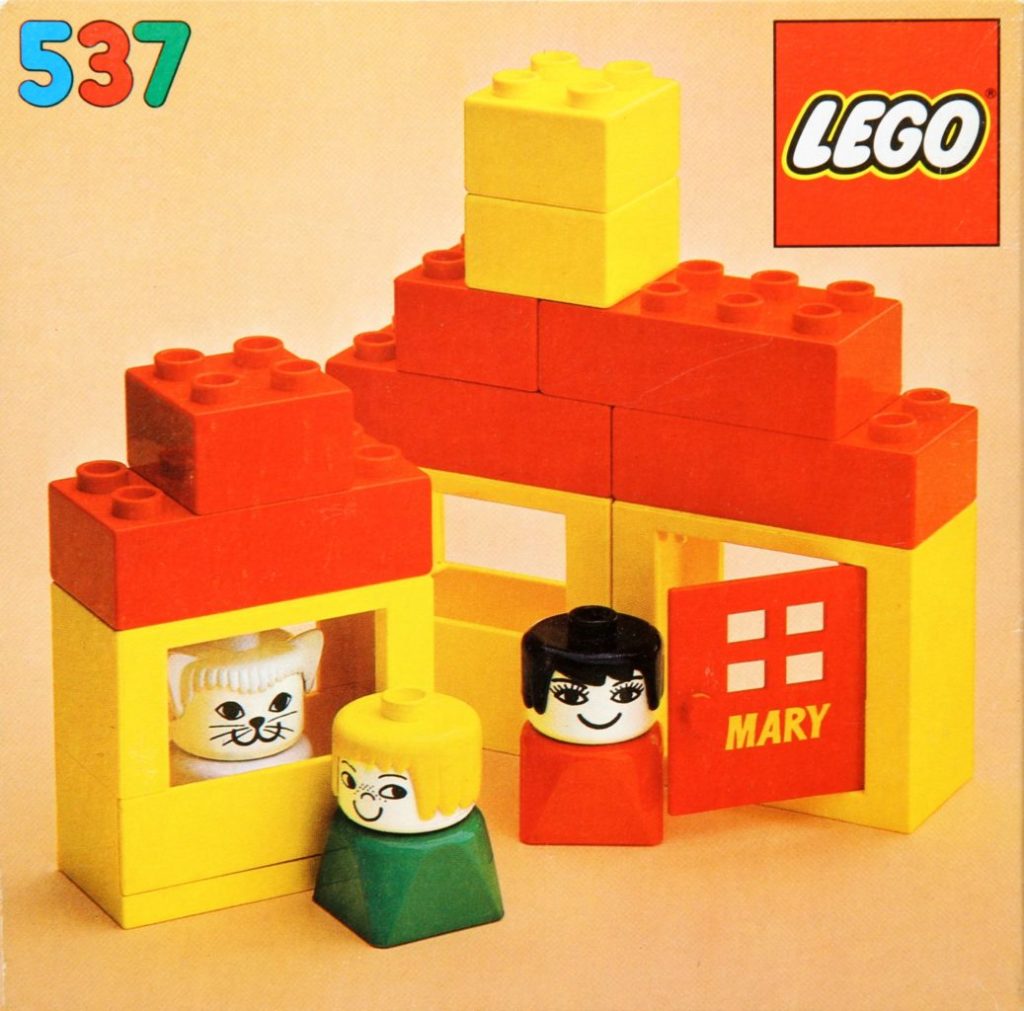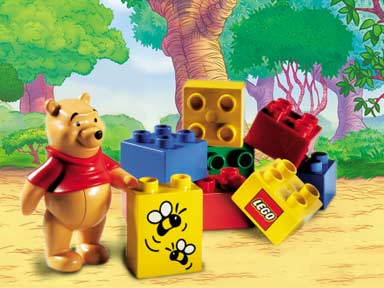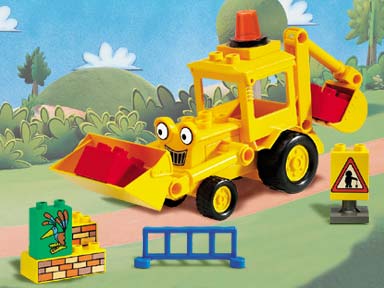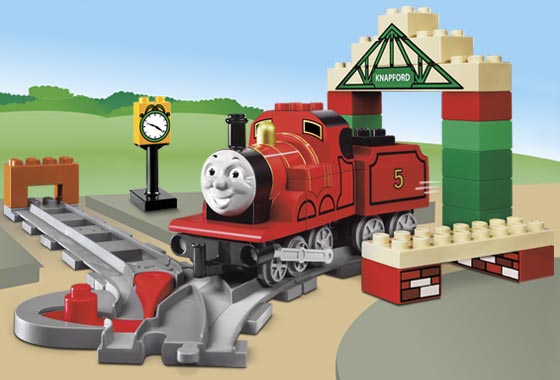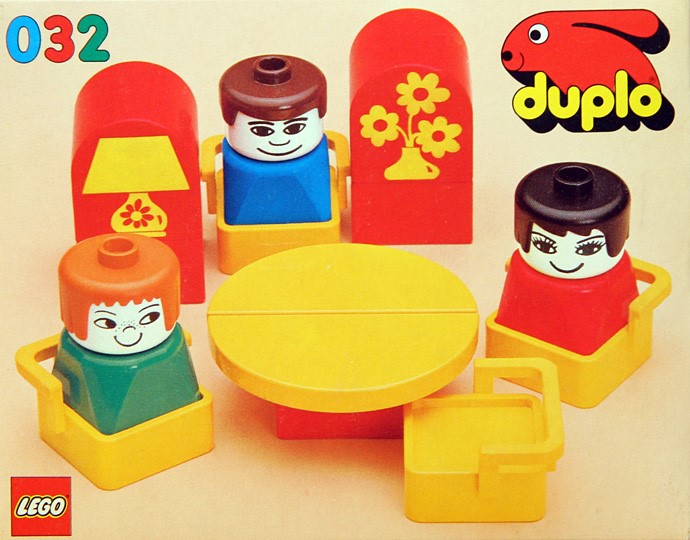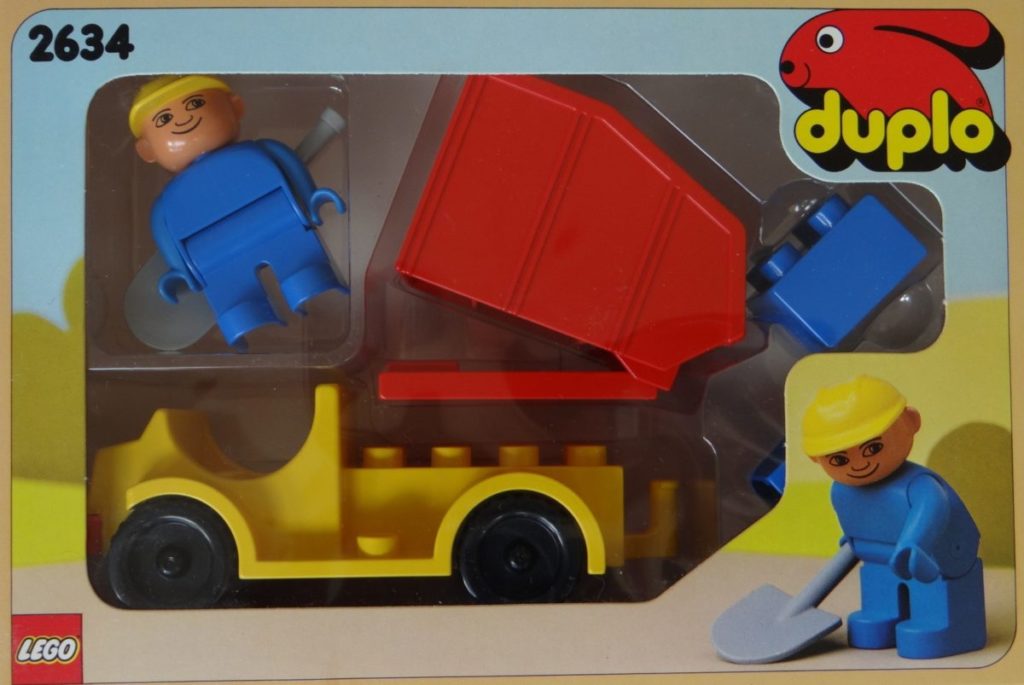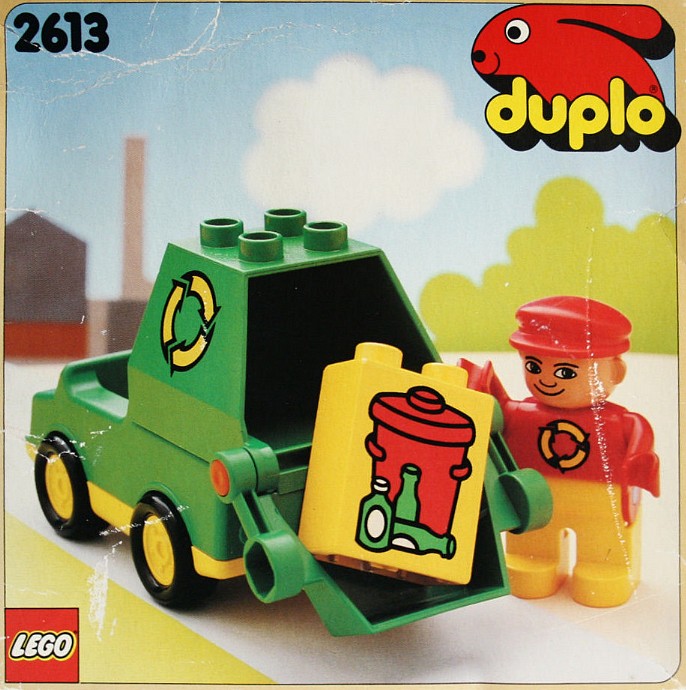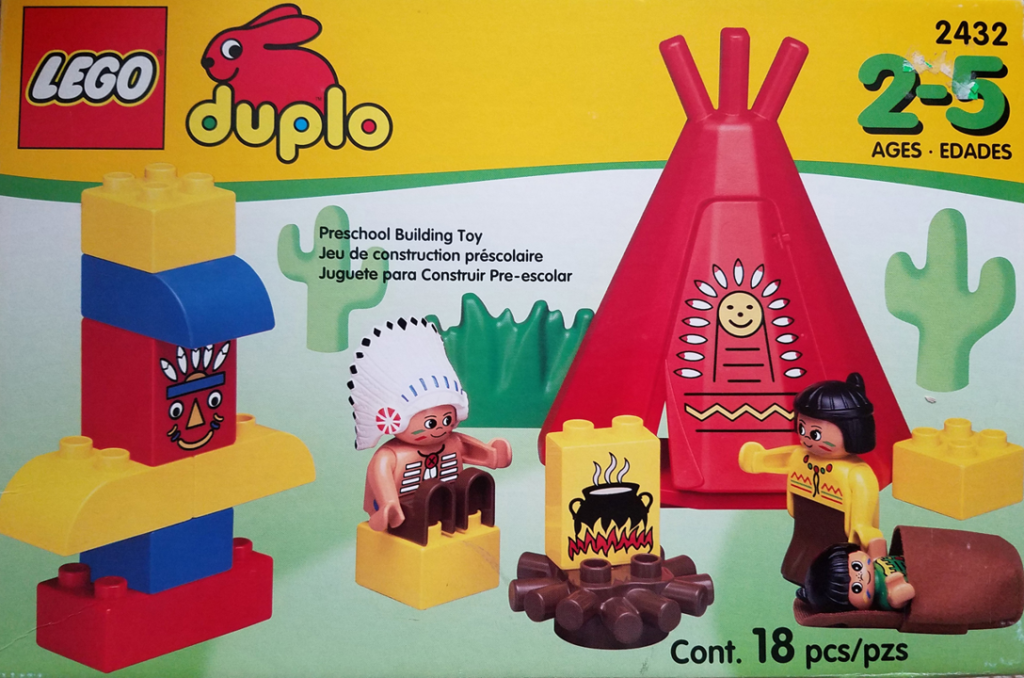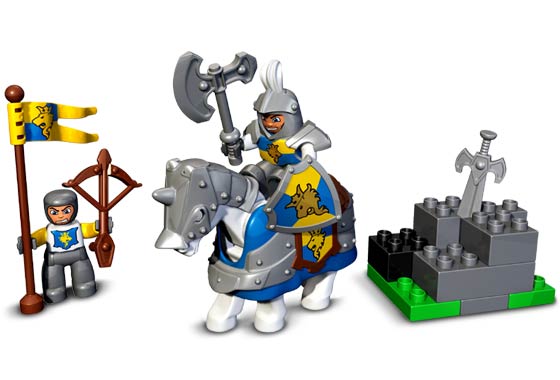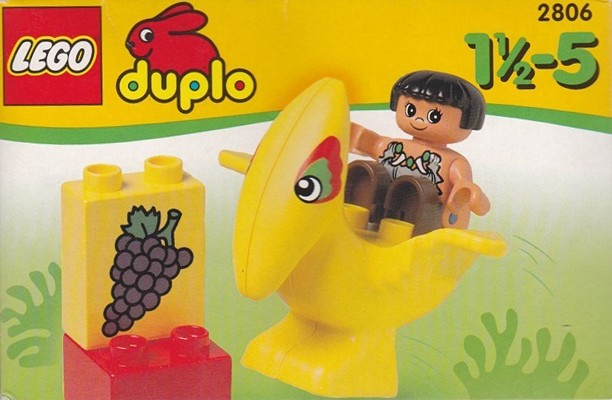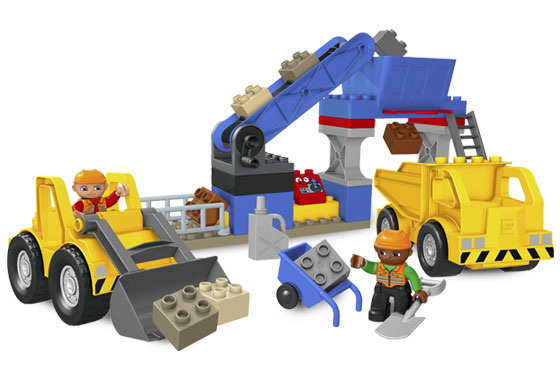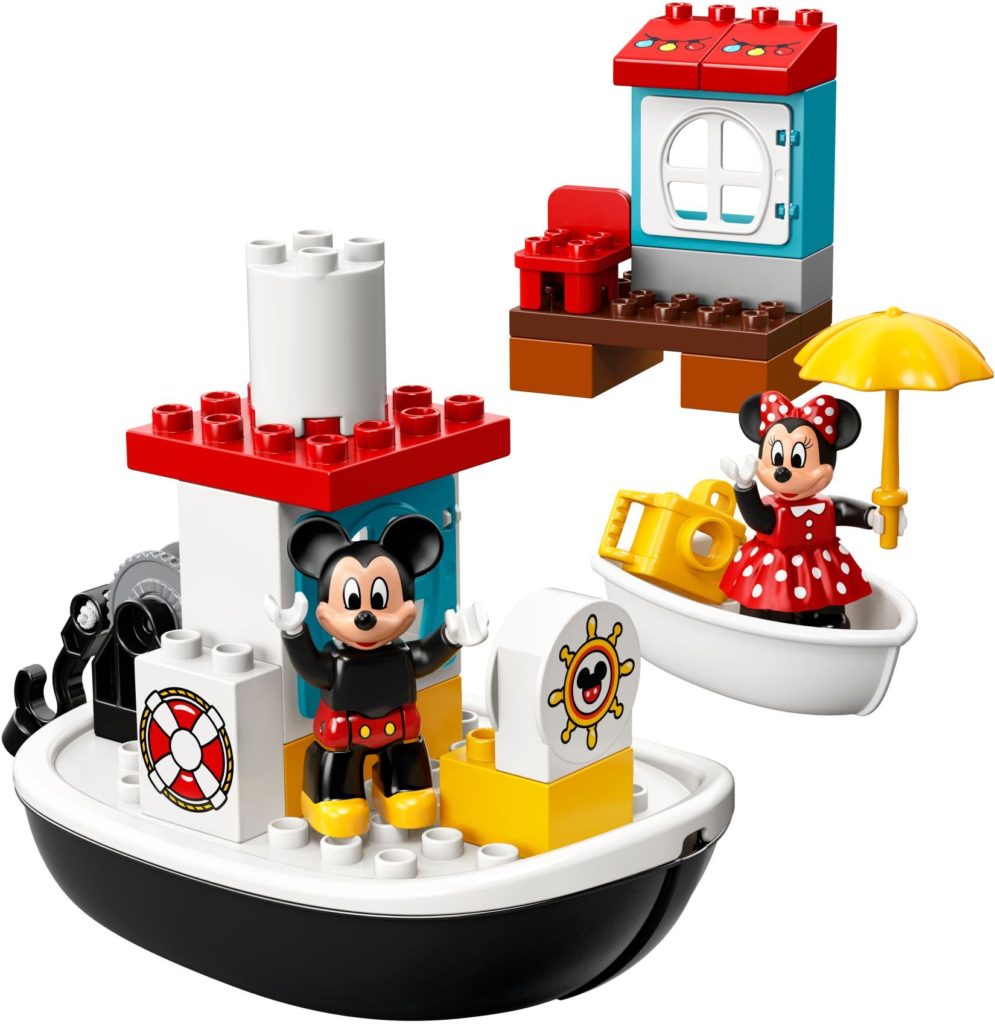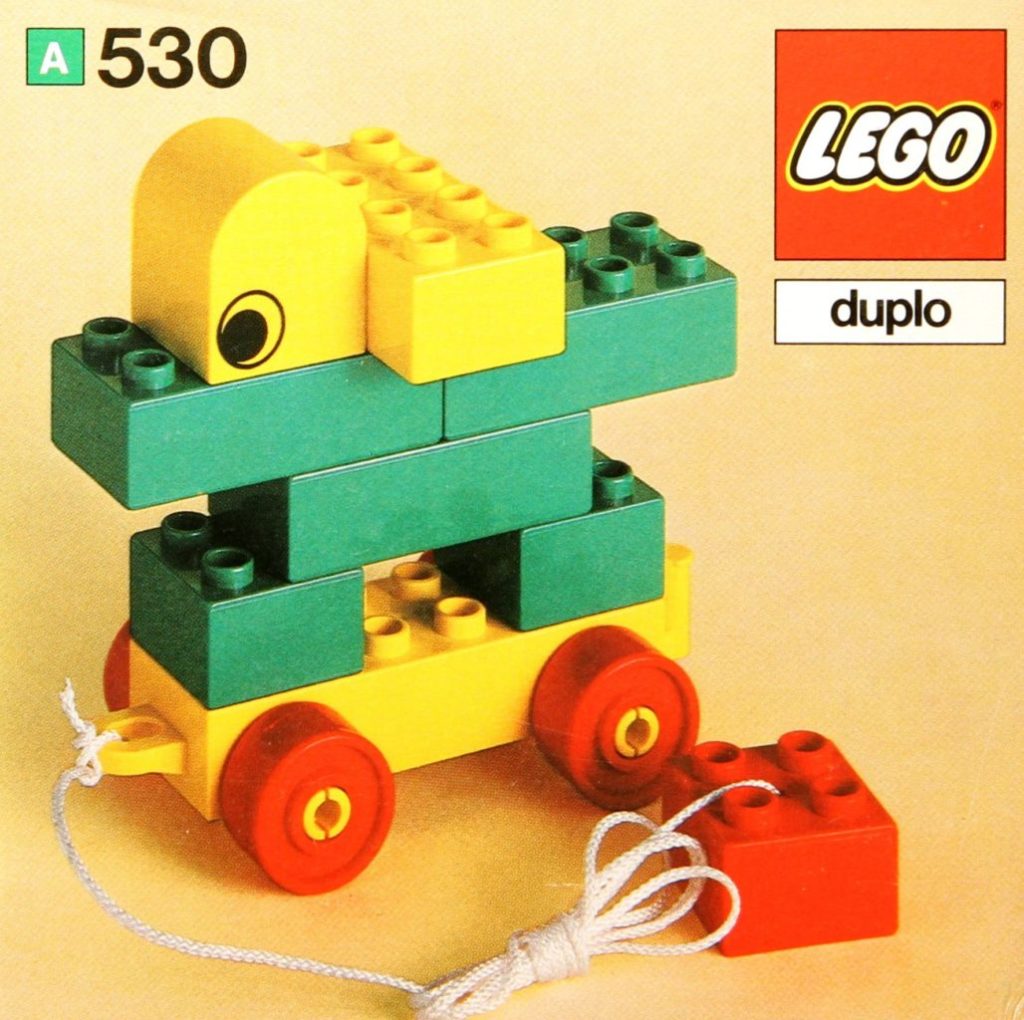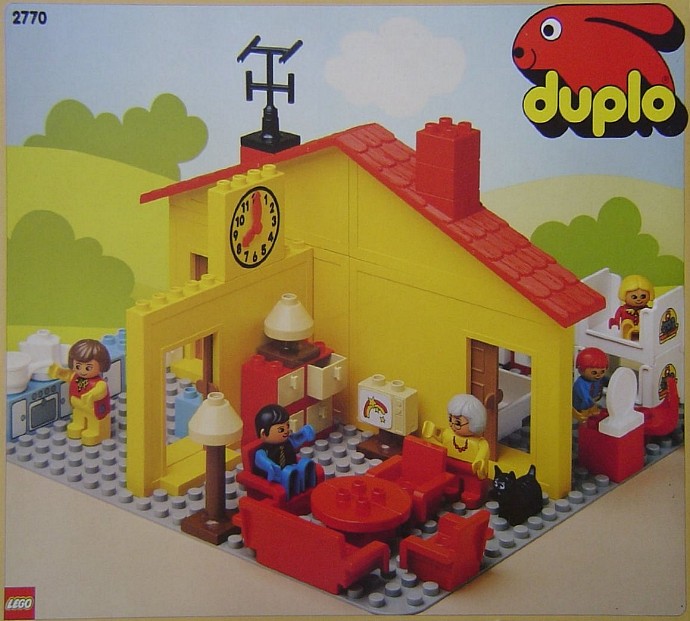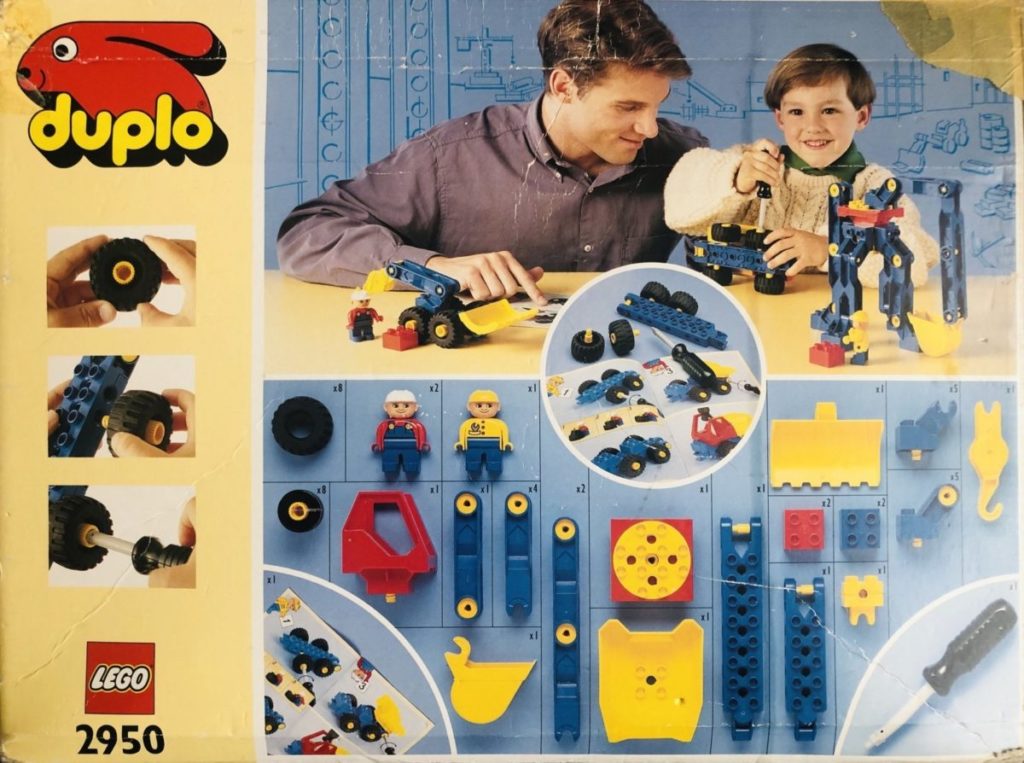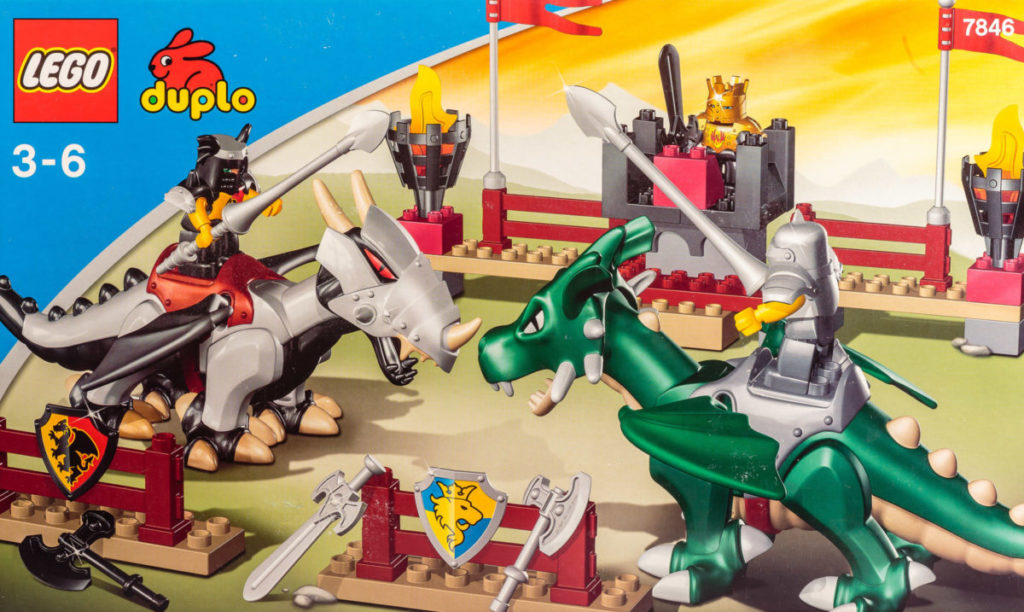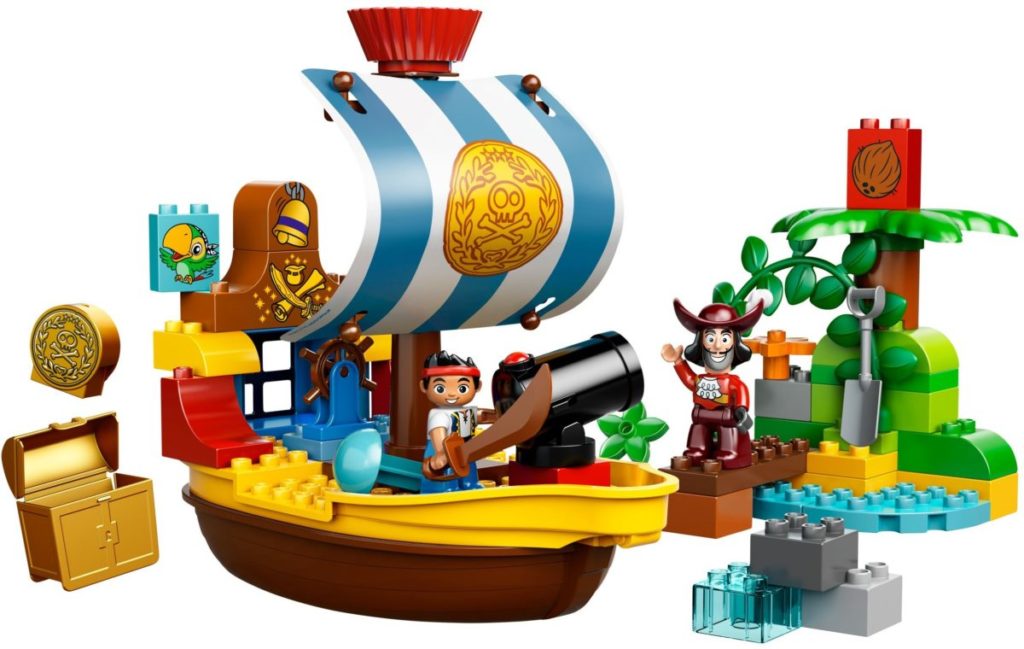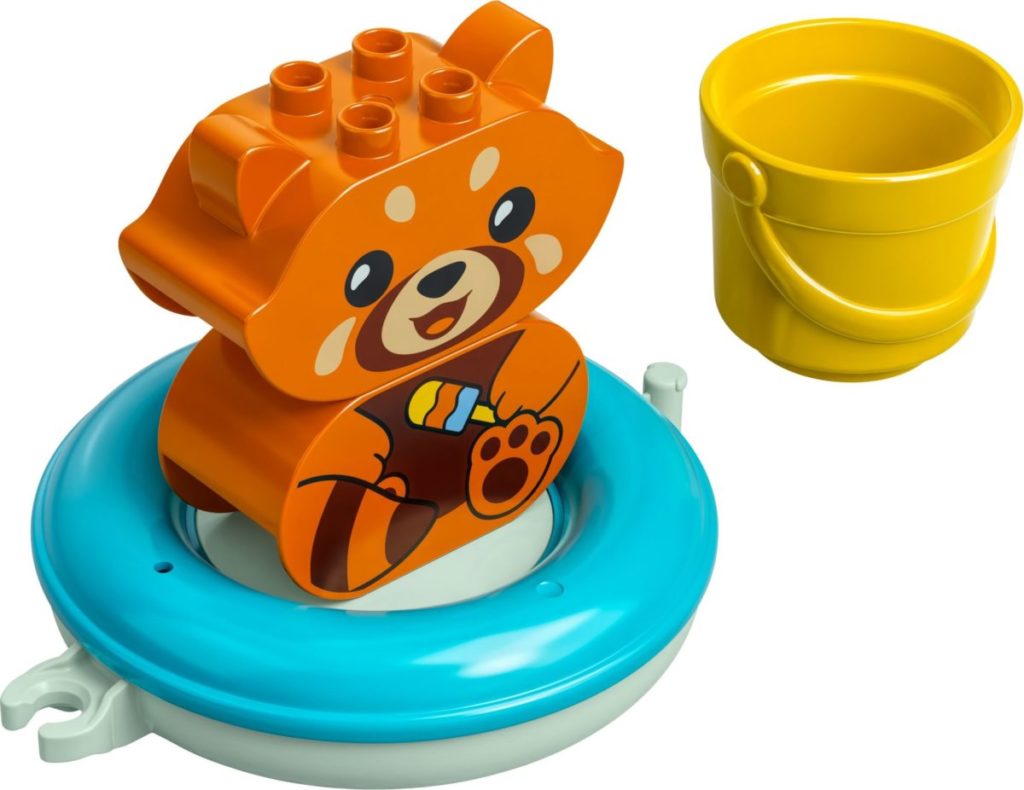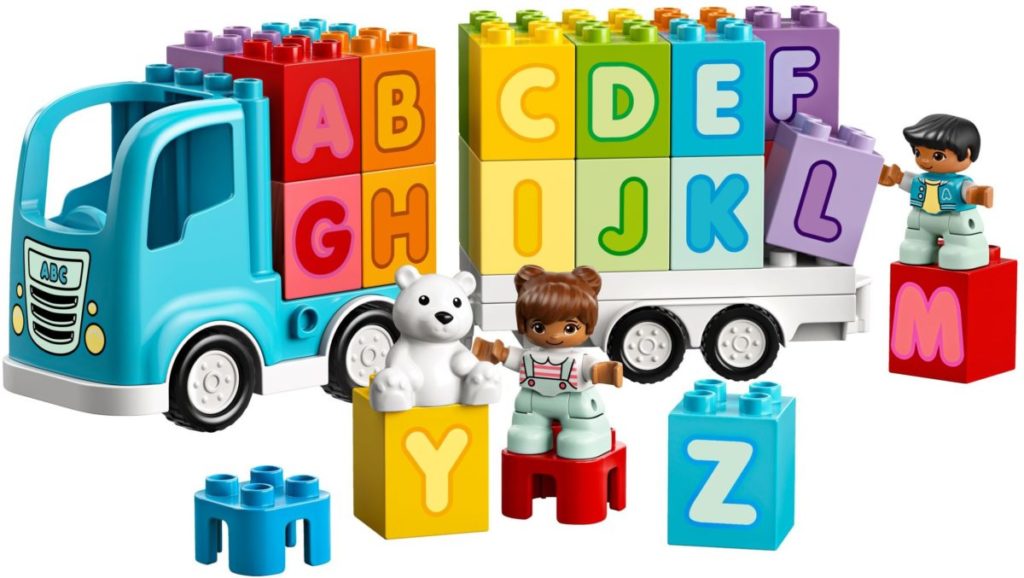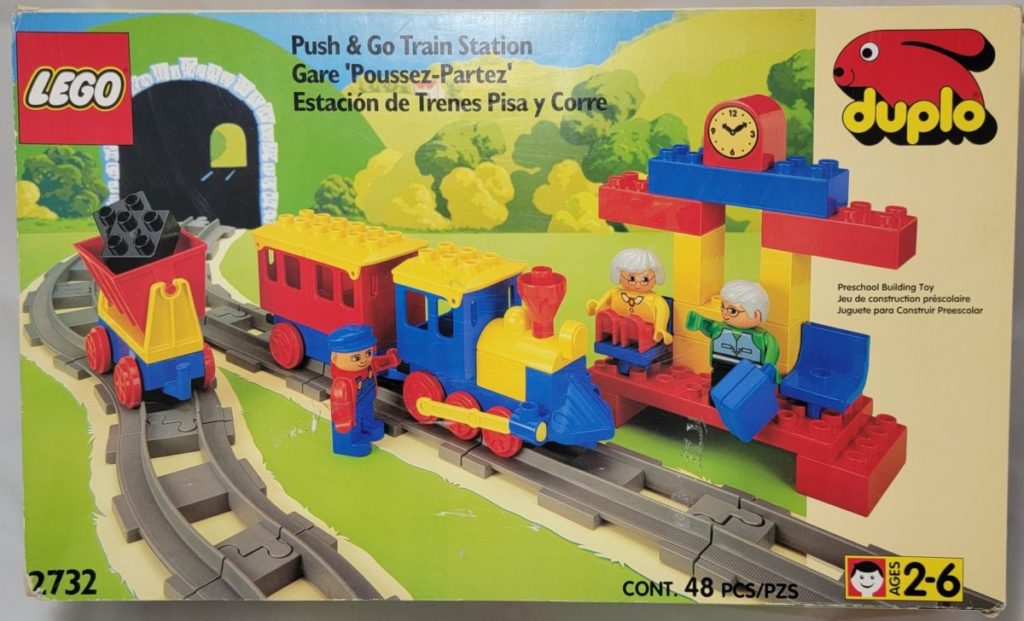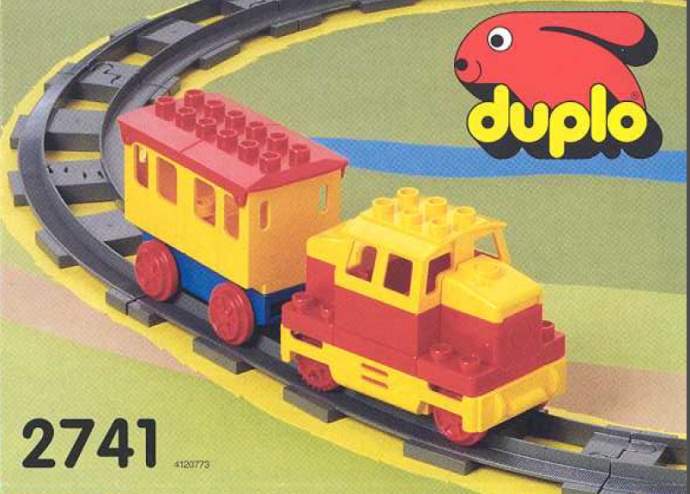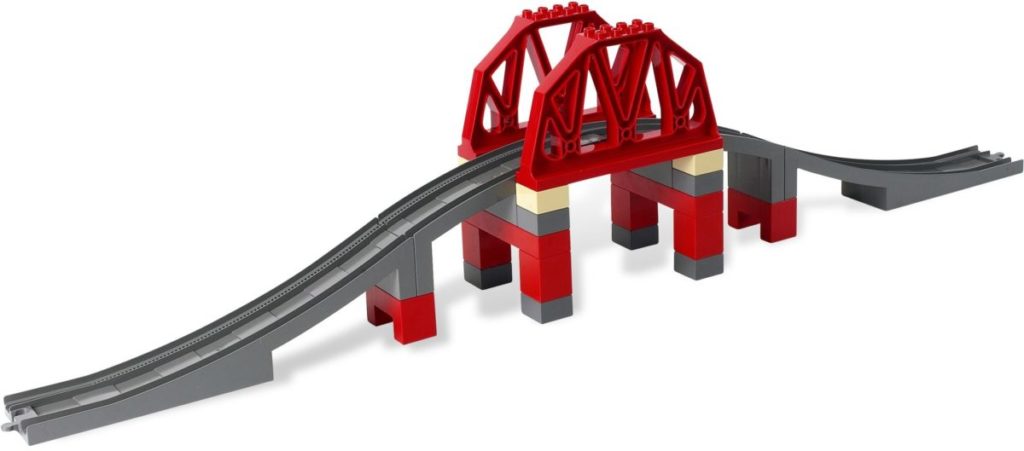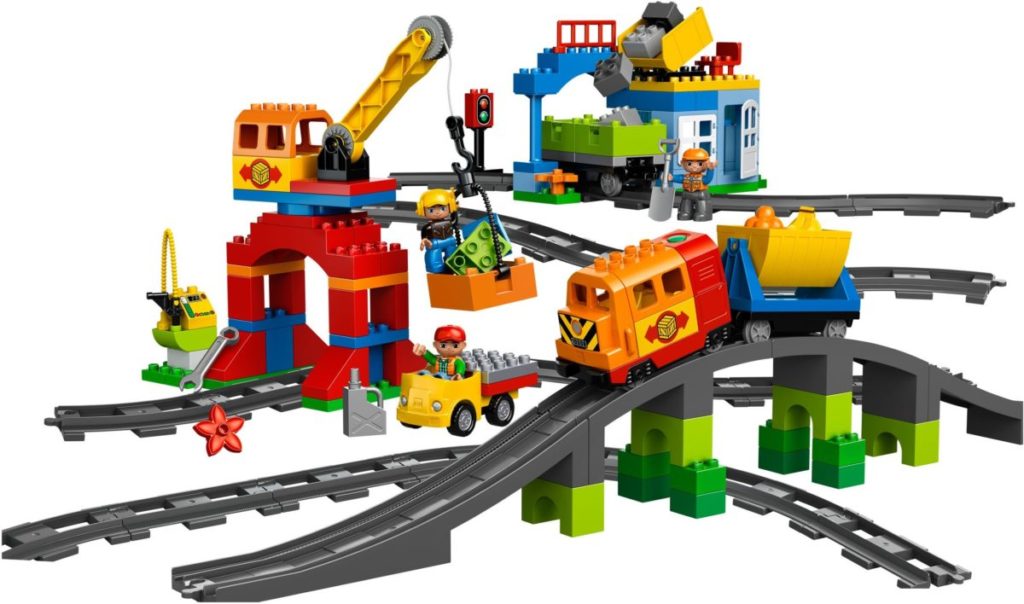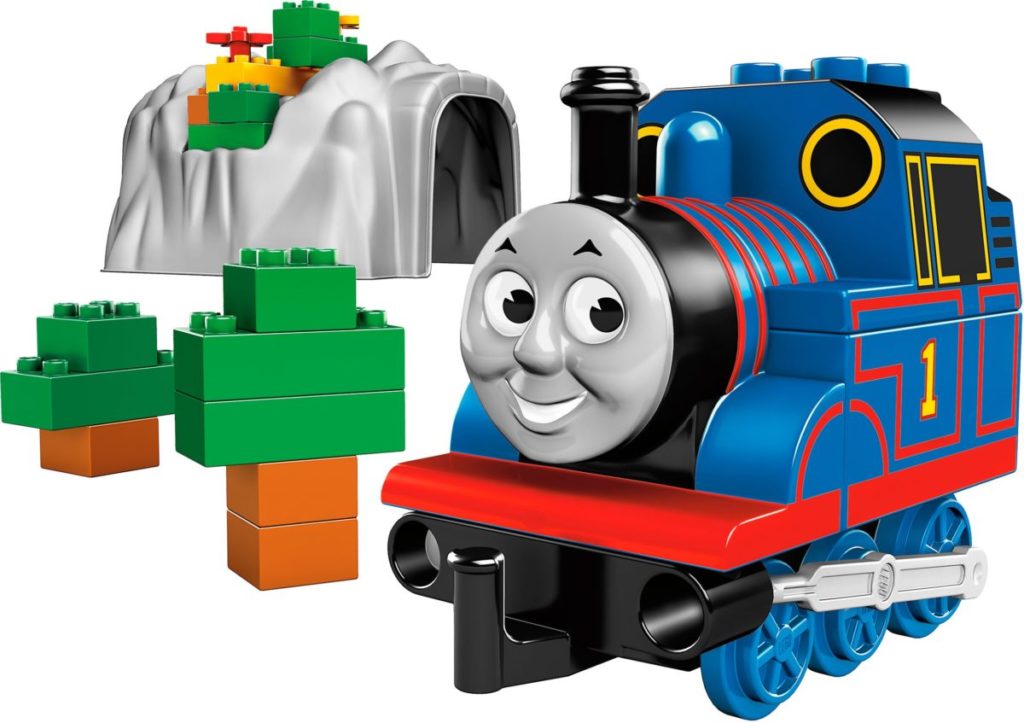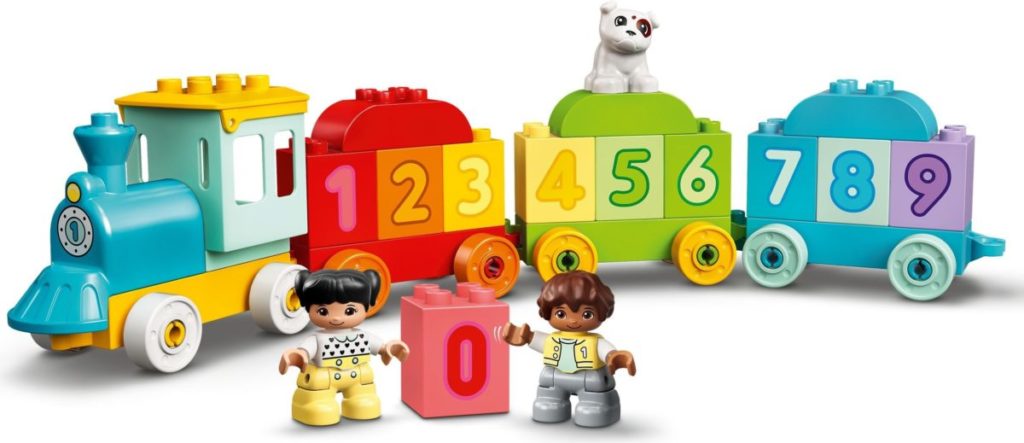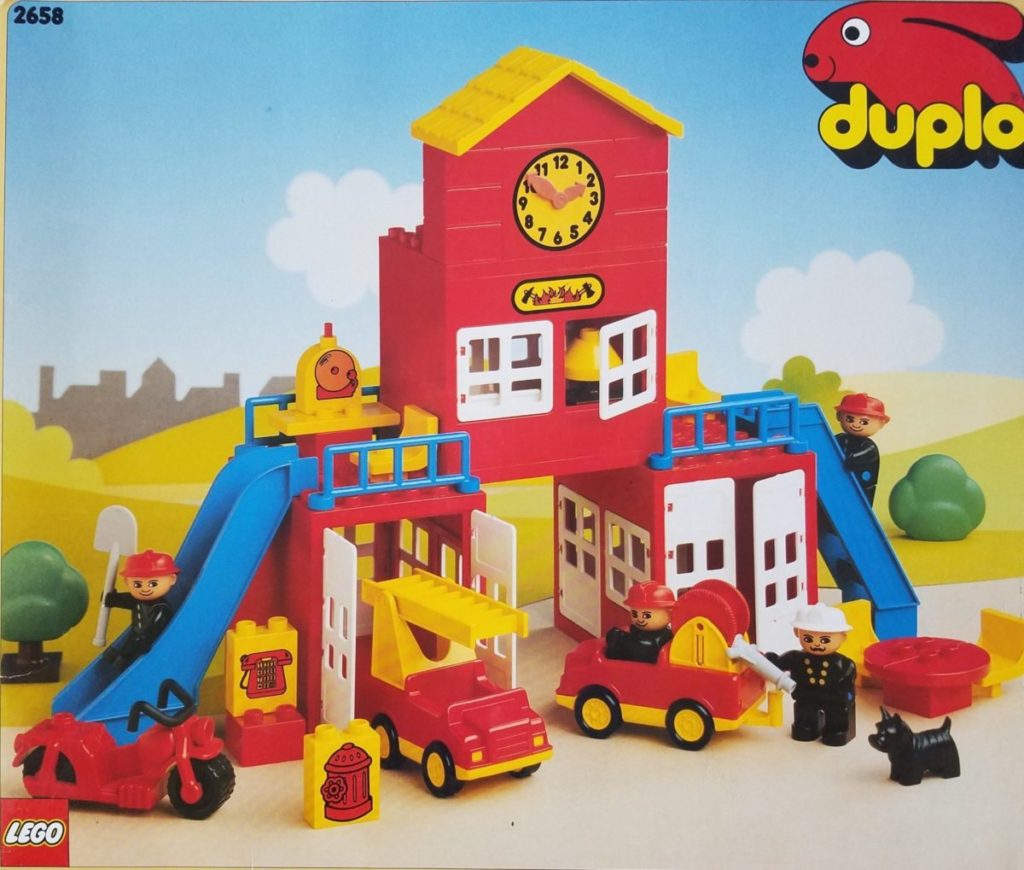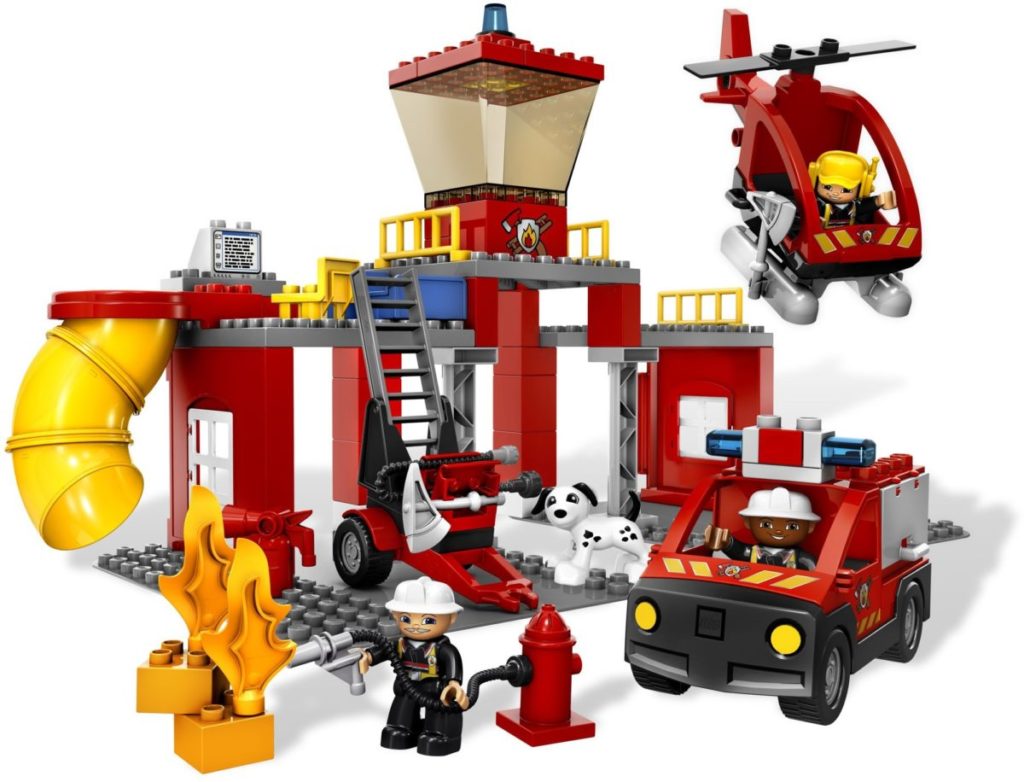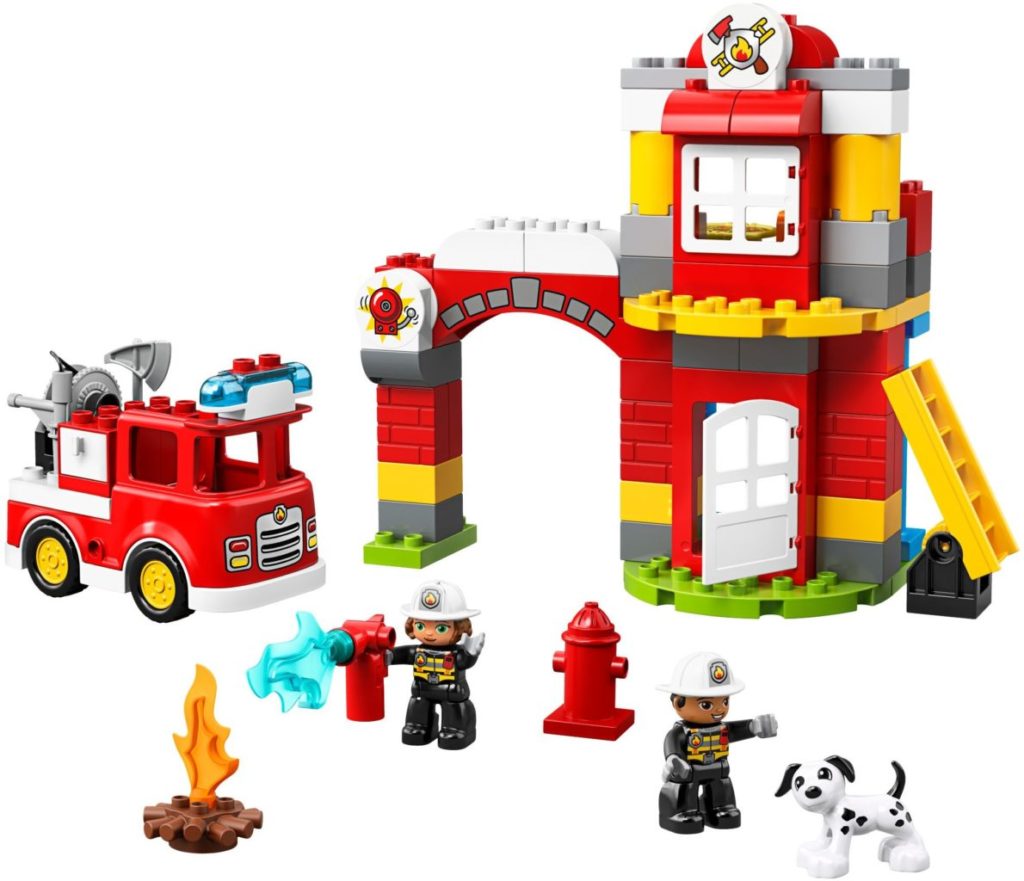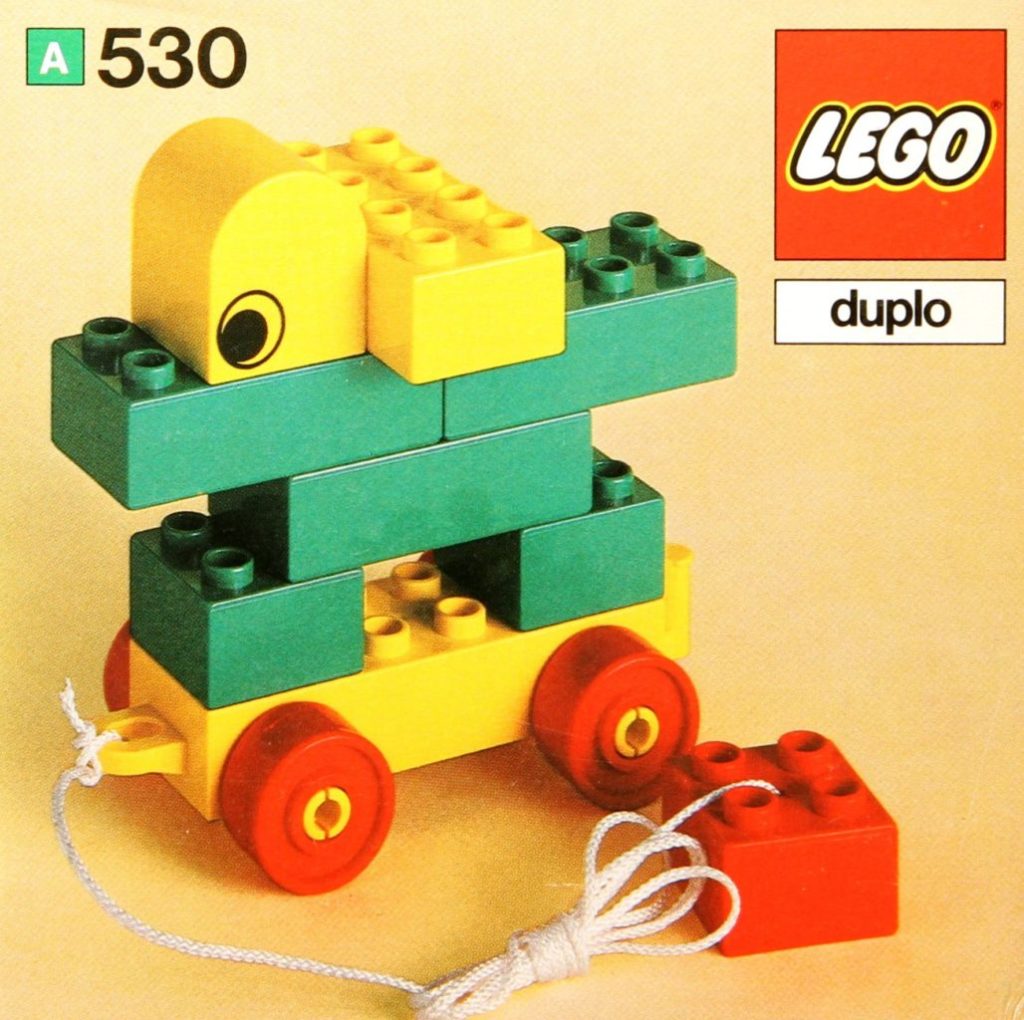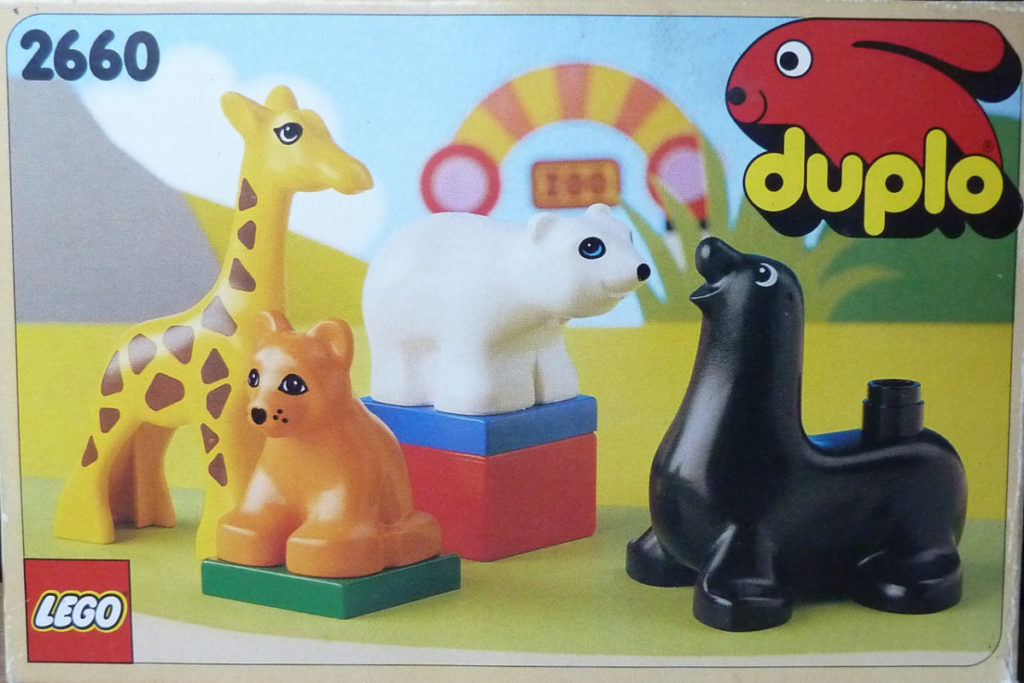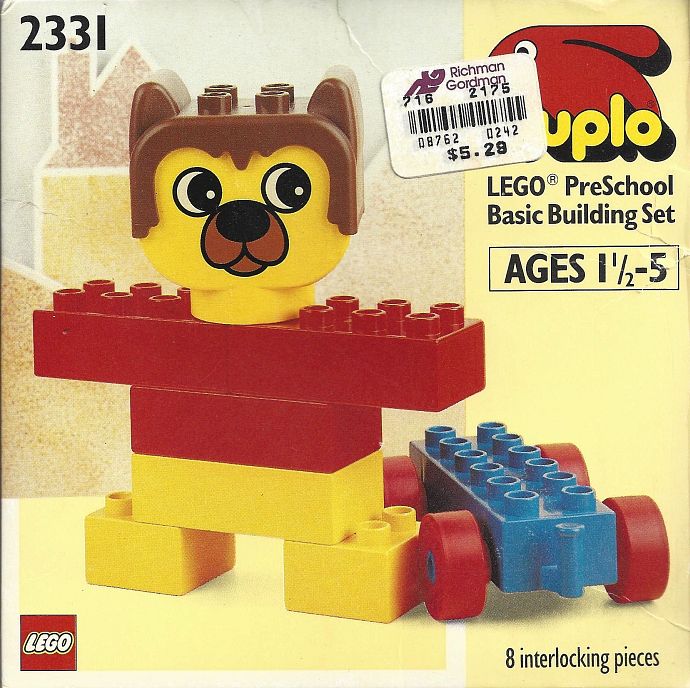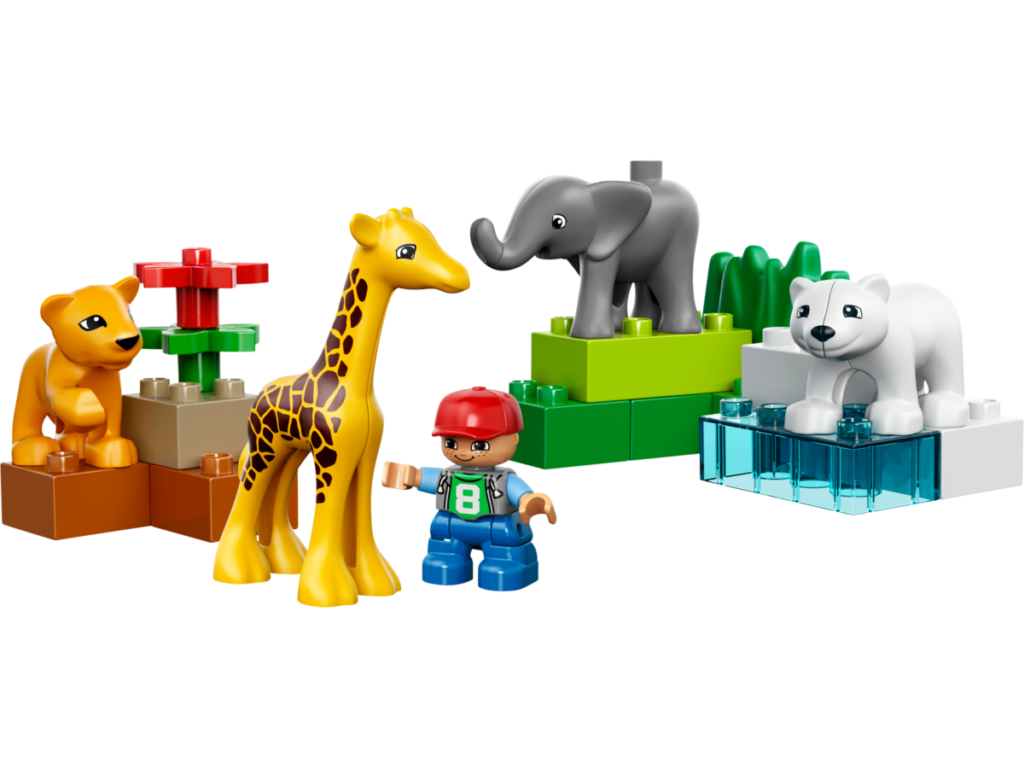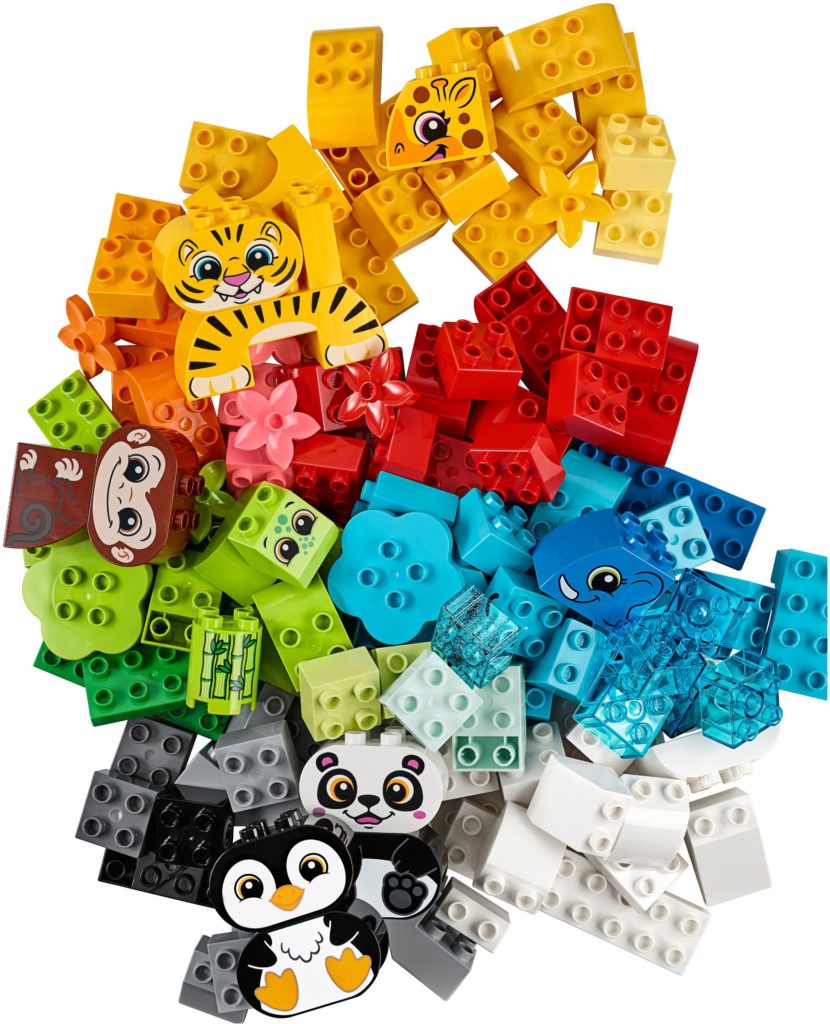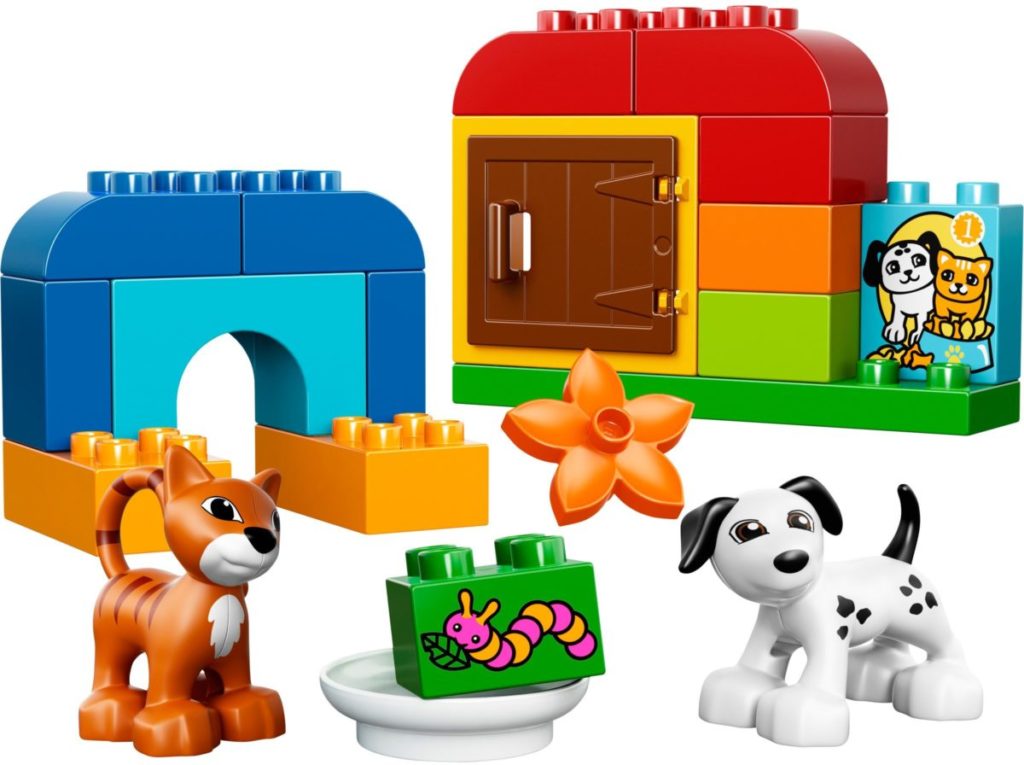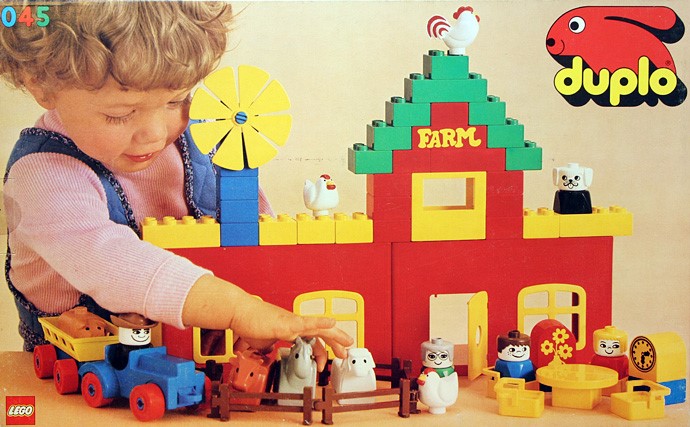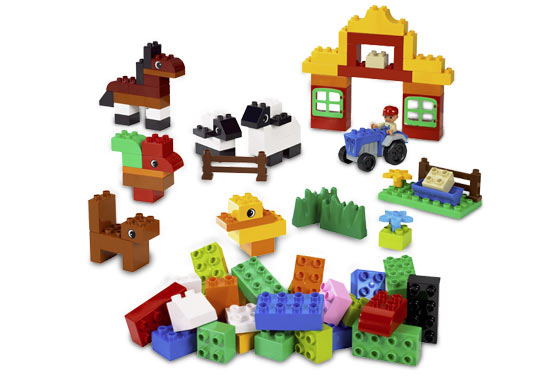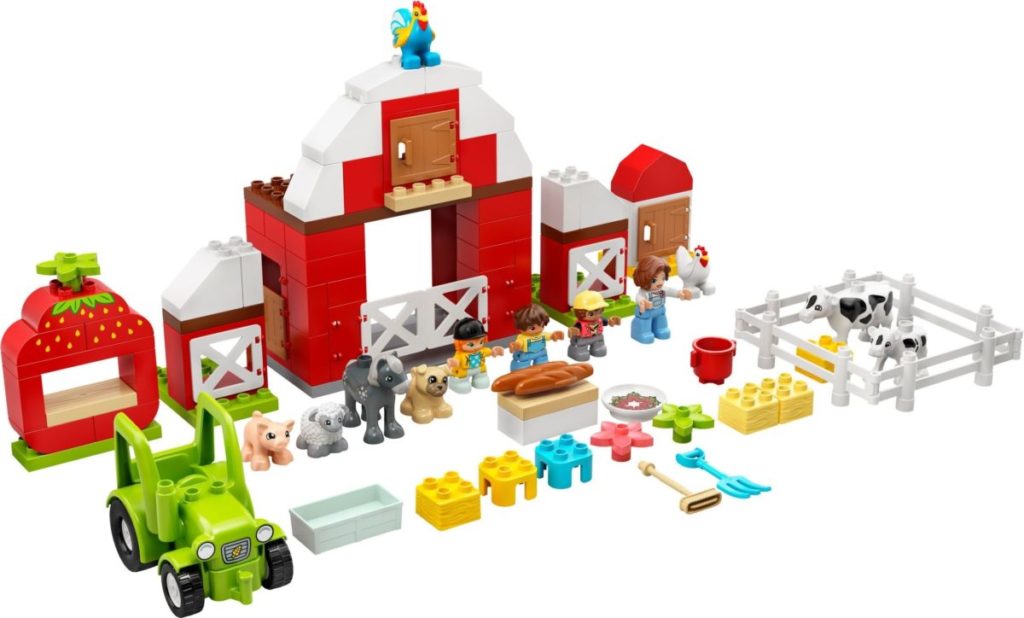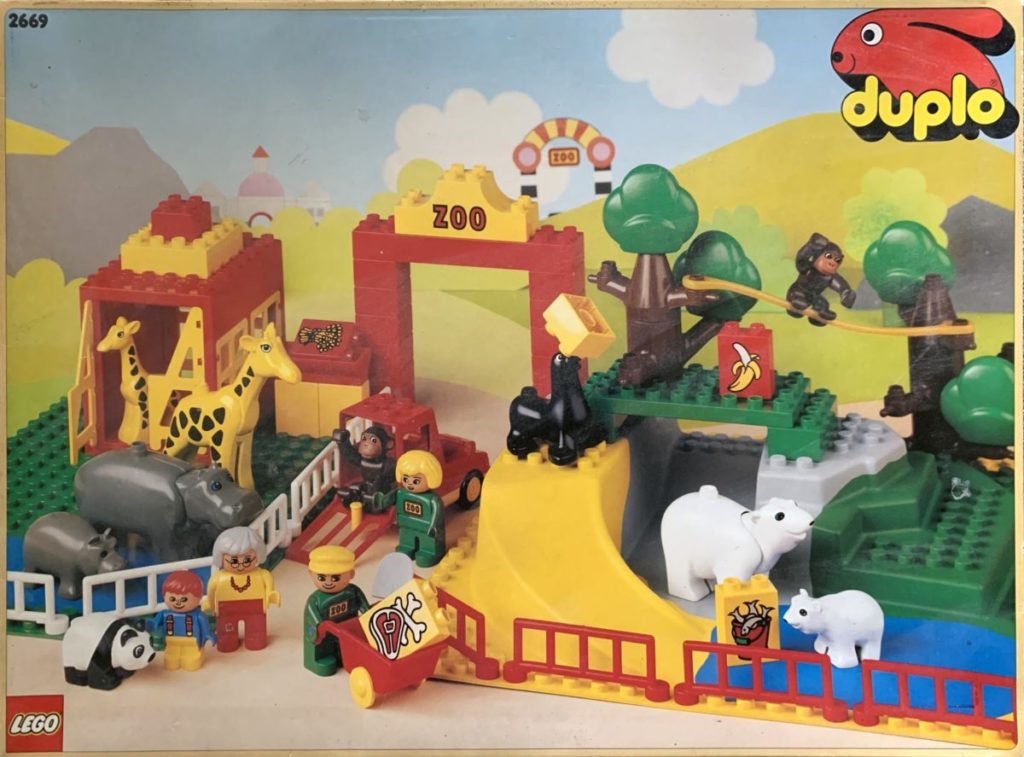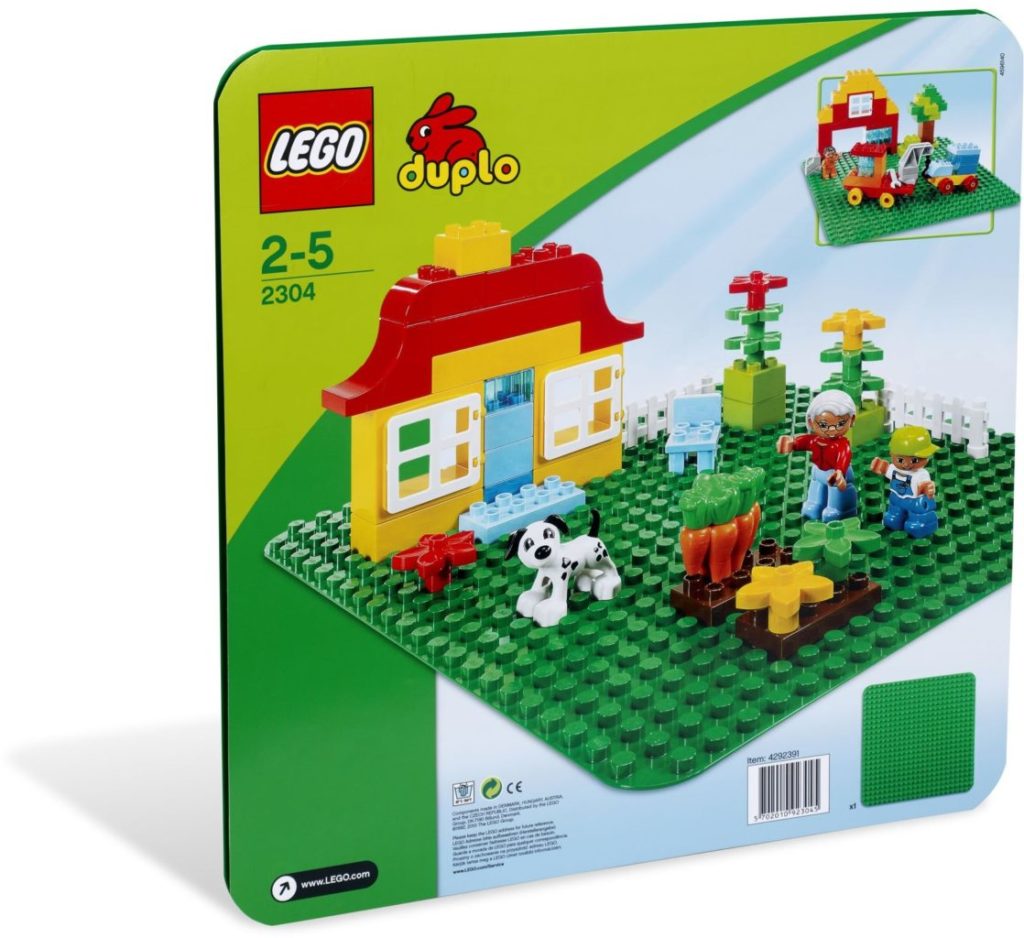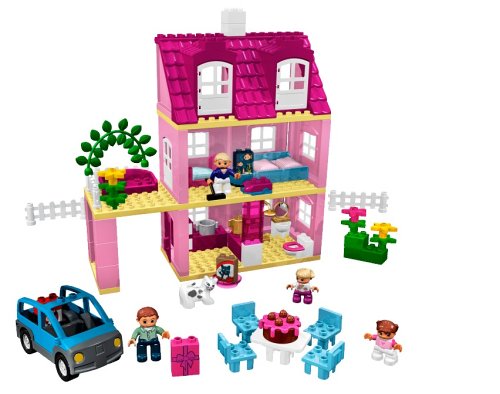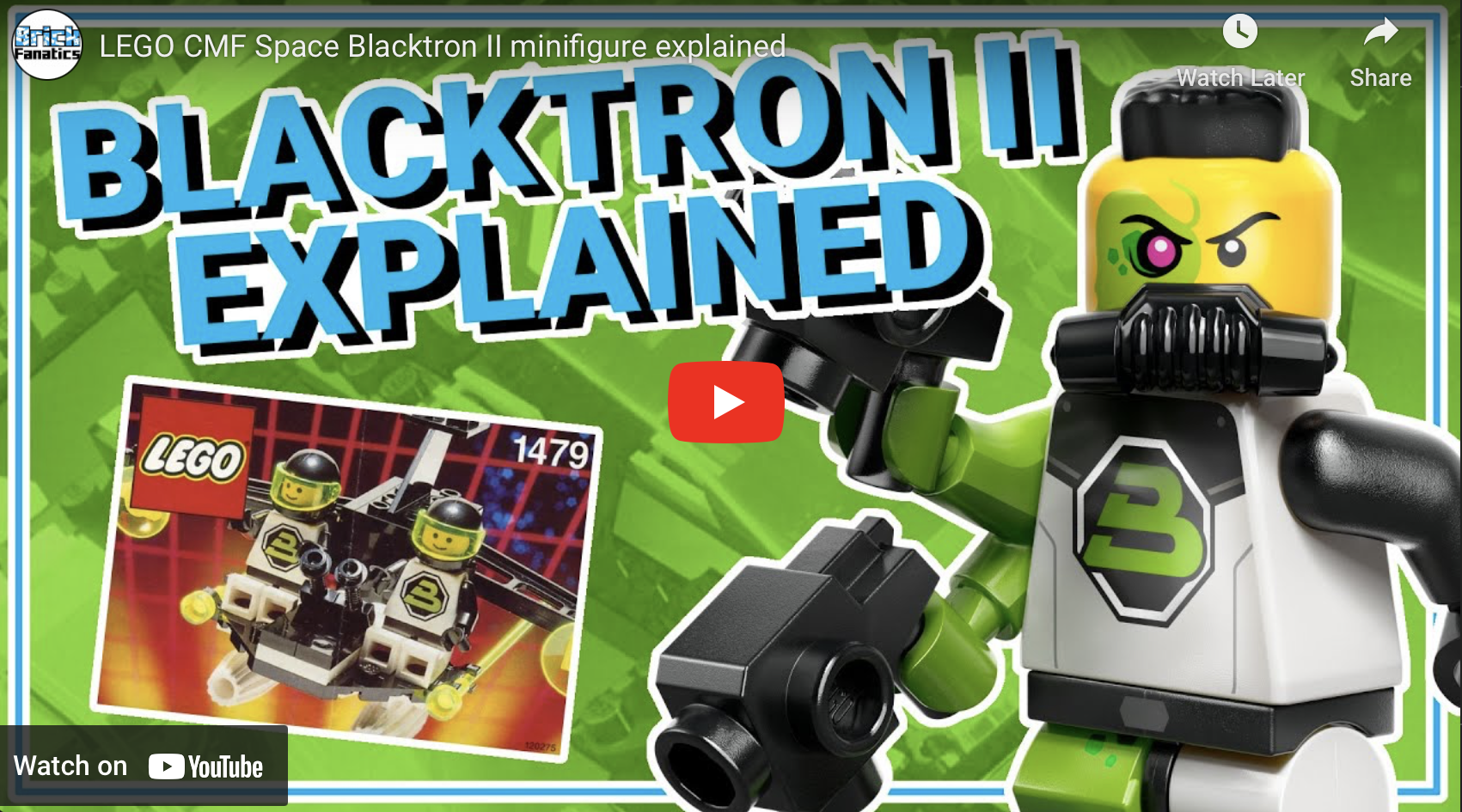While the LEGO Group loves its older fans, it hasn’t neglected its younger ones. Since the late 1960s, the DUPLO range has been entertaining children from as young as one year old. The success of the theme is undeniable; to date, more than 1,200 different DUPLO products have been released over the years.
Today’s DUPLO theme is still going strong, with a variety of different worlds for young fans to explore. A number of licensed models also allow young fans to play with their favourite characters more easily.
Visit LEGO.com to see the DUPLO sets currently available.
DUPLO history
The first DUPLO sets appeared in 1969, at a time when the LEGO brand had firmly established itself. While the word ‘LEGO’ has its roots in the Danish language, ‘DUPLO’ draws directly from Latin – specifically ‘duplici’, the Latin word for ‘double’. This was an allusion to the fact that DUPLO bricks are twice the size of their LEGO counterparts.
Despite this size discrepancy, DUPLO elements are largely compatible with LEGO elements. This allows for additional creative opportunities, particularly amongst older custom builders.
Like their LEGO siblings, early DUPLO sets were rather freeform in their overall product design. They included colourful selections of simple shapes, which young fans could use as they saw fit. Early sets introduced wheels and printed elements, allowing for the easy creation of vehicles and animals.
The late ‘70s would also introduce the first DUPLO figures. Their arrival meant that set designs started to calcify a little more; figures were seen in farms, houses and other structures, although the target audience probably didn’t observe such a rigid approach to play. Luckily, fans could still buy generic boxes of bricks during this period.
The demands of such a young audience meant that DUPLO’s form factor and subject matter didn’t really change as time went by. Pre-moulded vehicles and other elements (such as slides and fences) would pop up during the ‘80s, and the ‘90s would introduce more animals to the world of DUPLO. However, the themes and ideas explored in DUPLO were relatively less radical than LEGO itself.
The late ‘90s saw the LEGO Group branch out into licensed themes properly, with LEGO Star Wars sets arriving on shelves in 1999. The DUPLO theme also started to venture into licensed territory at this time, albeit in a different direction. A selection of sets inspired by Winnie the Pooh was released in the same year, featuring new elements to represent Pooh and his friends.
Later licensed themes included Bob the Builder, Little Robots and Thomas the Tank Engine, which built upon DUPLO’s tradition of train sets. This more explicit theming was extended to other DUPLO sets, which began to release castles, police stations and other concepts with greater frequency.
The 2010s continued in a similar vein, with a mix of generic bricks, buildings and licensed models. Familiar subject matter like farms, castles and fire stations all popped up, as did a wide range of Disney sets; Winnie the Pooh would reappear in DUPLO form during this period. This was also the time that superheroes would appear in DUPLO form, reflecting the LEGO DC theme; now Superman, Batman, Spider-Man and some of their enemies could enjoy DUPLO counterparts.
As we move through the 2020s, DUPLO will be familiar to many previous generations. Although a few new concepts have popped up, this is one theme that nailed its core ideas almost from the beginning.
DUPLO minifigures
Representations of people have appeared in DUPLO sets for most of the theme’s lifespan. Like LEGO people more broadly these have seen a few iterations over the years, ending up in a very different place to minifigures.
The first DUPLO people appeared in 1977 and were extremely simple. They featured a cylindrical head similar in form to a minifigure, but with white skin instead of yellow and with fixed hair and headgear. They also featured noses, although their torsos were unfeatured with no limbs to speak of.
These early characters were easy to slot into LEGO creations, and they quickly received custom furnishings such as tables and chairs. By the ‘80s, these characters were already seeing revisions; a new DUPLO character with arms, legs and limited articulation was introduced. This featured a more realistic skin tone, although the basic figure continued to appear in a few sets during this period. Later sets would also introduce a smaller, baby-sized figure to allow for new play scenarios.
The expanding selection of subject matter also gave DUPLO figures new roles to inhabit. Early characters had been police officers, train drivers and race car drivers, and inhabited domestic settings more broadly. Later sets would explore different eras of history, depicting DUPLO figures as cowboys, cavemen and knights.
In keeping with the LEGO Group’s more experimental phase, the early ‘00s introduced a short-lived range of dolls. These featured fabric components and limited compatibility with other LEGO elements. The DUPLO Winnie the Pooh range took a similar direction, featuring pre-moulded characters that better recreated their animated counterparts.
The mid-‘00s returned to the articulated figure, but now the hands matched their owners’ skin colour. This was a welcome addition, particularly since the hands now featured moulded finger detail. Improved printing on figures also boosted their overall quality, and to further improve the play experience, DUPLO figures began to receive more accessories to hold such as tools and wheelbarrows.
Even with the design of the DUPLO figure formalised, other approaches to humanoid characters still appeared. Sets like 6760 Let’s Go! Wroom! used simple elements to create a pair of characters, with a similar form factor to early DUPLO figures. Licensed sets also introduced new headpieces, as sets like 10881 Mickey’s Boat demonstrate.
Like the minifigure, the DUPLO figure has settled into a comfortable design groove. However, an increasing variety of skin tones and hairstyles allow more DUPLO fans to feel represented in the toys they play with.
DUPLO sets
DUPLO products allow very young fans to flex their creative muscles, but this young audience presents its own design challenges. Fine detail is out thanks to choking hazards, and licensed subject matter must be toned down to accommodate such a young audience. It’s telling that no DUPLO sets have been released with the Star Wars branding, for instance.
As such, a lot of DUPLO sets over the years have gone in fairly similar directions. However, there have been several unusual ideas, some of which haven’t gained much purchase after their release date.
Basic collections of bricks were a hallmark of early DUPLO releases, and this freeform building experience is still encouraged in a few modern DUPLO sets. However, as with LEGO more broadly, the focus is on specific subject matter for the most part. An ambitious early release was 2649 Sea Explorer, which offered a large boat and a smaller vehicle. Similarly, 2770 Play House offered a large house to play in, complete with a kitchen, living room and bedrooms to sleep in.
A wide variety of vehicles have also appeared over the years. The ‘90s brought us simple sets such as 2609 Racer and 2613 Garbage Truck, with the latter offering an onboard compartment for bricks to be deposited. Their one-piece construction allowed young fans to enjoy familiar vehicles safely, and without lots of construction beforehand. Other vehicles such as aircraft and motorcycles have enjoyed DUPLO versions over the years.
TOOLO – a short-lived DUPLO spinoff – allowed for a more nuanced approach to vehicle construction. Sets came with a screwdriver tool, which could literally be used to screw certain vehicle components together. Despite expanding our idea of what a DUPLO model could be, the theme’s last sets appeared in 1999.
Other DUPLO sets have aged similarly well. The late ‘90s brought us a handful of sets inspired by the Old West and Native American cultures, although such subject matter has been largely absent from LEGO products since that period. This is most likely because of the accusations of cultural appropriation such sets would inspire.
The ‘00s were on safer ground with their castle-themed DUPLO sets, although like LEGO castles more broadly these are less popular nowadays. A handful of pirate-themed sets have also popped up in the DUPLO range, although these have proven similarly short-lived. That said, a range of sets inspired by Jake and the Neverland Pirates did appear a few years after.
Recent releases have inspired play in new environments, including more overtly educational ones. Sets like 10964 Bath Time Fun: Floating Red Panda are designed for use in water, while others like 10915 Alphabet Truck include a full set of letters to learn with. Given the young audience, it’s surprising such sets aren’t more common in the wider DUPLO theme.
DUPLO train
LEGO and trains have gone hand in hand for several decades, with new trains appearing regularly in the CITY theme. The DUPLO theme has also given us plenty of trains, with some fun features missing from the broader LEGO lineup.
The first DUPLO train sets appeared in the early ‘80s, with sets such as 2700 Train Set. These were simple unmotorised models, but they were accompanied by a wide selection of supplementary track packs including points and bridges. Inclines are notoriously difficult to engineer on real-life railways (and remain absent from today’s LEGO trains) but the smaller locomotives and rolling stock seem to have facilitated such features in the DUPLO theme.
A motorised DUPLO train popped up in 1993, although unmotorised versions were still available. This train also came with plenty of supplementary track, and more motorised versions (at different price points) followed a few years later. 2745 Deluxe Electric Train Set certainly lived up to its name with wagons, a simple station and even a level crossing.
DUPLO trains continued to appear throughout the ‘00s and ‘10s, with tunnels, cranes and more ambitious station buildings all making an appearance. From 2005 to 2009, DUPLO fans could also enjoy Thomas the Tank Engine sets. These sets were compatible with existing DUPLO tracks and wagons, with classic characters like Thomas, Percy and James all making an appearance. Newer characters such as Spencer and Salty also received DUPLO counterparts during this period.
Motorised trains are still available in today’s DUPLO lineup, but the concept of a train has been broadened a little. 10954 Number Train – Learn to Count uses simple wheeled elements that don’t need tracks to be enjoyed. Sets like this are available at a much smaller price point than the motorised versions, offering a welcome alternative for parents.
DUPLO fire station
Fire stations are another staple of LEGO, and DUPLO has served fans rather well in this area over the years. The first fire station appeared in this theme in 1989, although a standalone fire engine had been released previously. 2658 Fire Station included a quartet of firefighters, three vehicles, and a slide to get to the action more quickly. 2693 Fire Station (released 1995) was relatively smaller, but it did include a helicopter and working fire bell.
Later models would all contain familiar elements of a fire station, and also include new elements like fire axes and dalmatian dogs (which have a long association with firefighting). As time went by, additional skin tones and genders were introduced, allowing for more diverse play experiences.
2022 will bring us a new DUPLO fire station, 10970 Fire Station with Helicopter. This set offers a more enclosed structure than previous efforts, as well as recent innovations such as light and sound bricks. The requisite slide is also included, showing DUPLO hasn’t forgotten its roots.
DUPLO animals
As a key component of any toy collection, animals have cropped up in various forms throughout DUPLO history. Like LEGO these animals normally require new moulds, although brick-built animals make regular appearances as well.
1976 introduced a trio of brick-built DUPLO animals. Sets like 530 Puppy and 532 Pull-Along Ducks allowed for the construction of simple creatures. They also included lengths of string and wheeled elements for extra play value. Later sets like 2335 Basic Set Animal (released in 1984) encouraged a more freeform approach to creature design.
A few years later, in 1988, the first pre-moulded DUPLO animal – an elephant – would appear in 2652 Circus Caravan. The ‘90s would continue in this direction; its Zoo subtheme introduced many new animals including crocodiles, tigers, hippos and monkeys. Elsewhere, 2331 Barney, The Skateboard Bear included a large pre-moulded animal head, with attachment points on both his scalp and neck. Similar heads would appear in other sets that decade alongside sets like 1664 Bird, which offered a highly simplified approach to its subject matter.
Other pre-moulded animals have continued to pop up throughout DUPLO history, including dinosaurs, penguins and dogs. The last few years have also brought us several brick-built creatures. A notable example of this was 10934 Creative Animals; in addition to printed animal heads, the set came with many other elements in different shapes and colours. This allowed DUPLO fans to really get their creative juices flowing.
DUPLO farm
On several occasions, DUPLO animals have appeared on farms – a relatively rare subject matter in LEGO sets elsewhere. DUPLO farm models date back to the late ‘70s; 045 Farm offered plenty of play potential, with a tractor, a sheep, a horse, a cow and several chickens. Farm infrastructure like a farmhouse and several fences were also included.
Farms and farm animals would go on to appear regularly in the DUPLO range. The late ‘90s and early ‘00s offered several small sets for fans of the theme. 3092 Friendly Farm, for instance, offered four animals and a horse-drawn cart. An element representing a pile of maize even allowed fans to ‘feed’ their animals.
The ‘00s also brought us a new approach to the DUPLO farm set. 2007 set 5419 Build a Farm forwent the pre-moulded animals in favour of brick-built ones, with animals like ducks, chickens, horses and sheep suggested. However, a wide selection of colourful elements allowed for more unusual approaches to animal husbandry. 5488 DUPLO Farm Building Set offered a similar idea in 2009, though by 2010 the idea was abandoned in favour of pre-moulded animals again.
Since then, DUPLO farms have stuck to the template of colourful farm buildings and diverse animal selections. The most recent example is 10952 Barn, Tractor & Farm Animal Care, which includes a large barn, some food, and plenty of people and animals to play with.
DUPLO baseplate
The larger scale of DUPLO sets means baseplates are often redundant. As such, they don’t appear too often in the DUPLO theme. 2770 Play House included one, thanks to the large footprint of that set. 2669 Maxi Zoo also included a baseplate, which pre-moulded topography to better represent a zoo environment.
When DUPLO sets do need a flat, stable surface to build from, they tend to use studded plates with multiple attachment points rather than the larger, flatter baseplates we’re accustomed to. Sets like 4966 Doll’s House demonstrate this idea and reflect a wider shift away from baseplates in LEGO sets.
For the old-fashioned builder, older styles of baseplates are still available. The DUPLO range currently offers 2304 Large Green Building Plate. Measuring just over 38cm x 38cm, it should provide a solid foundation – literally – for creative projects in the world of DUPLO.
DUPLO Black Friday
Check back around Black Friday for our predictions on DUPLO discounts.

